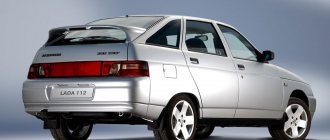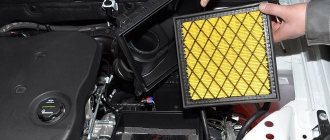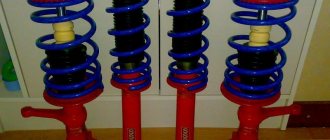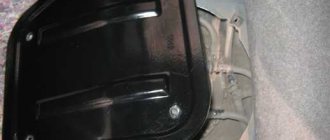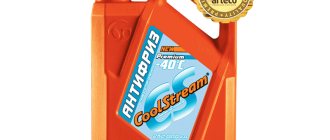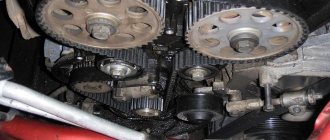When fuel burns in the engine, a significant amount of heat is released. Only a small part of it (30–40%, which corresponds to the efficiency of gasoline engines) is converted into mechanical energy, due to which the car is driven. Excess heat must be removed from the power unit through a liquid cooling system. Its performance directly depends on what kind of antifreeze in Grant is used during service. The quality and characteristics of the coolant affect not only the efficiency of heat removal, but also the frequency of its replacement. The better and more technologically advanced the composition, the longer the coolant retains its original characteristics, protecting the engine from overheating. This reduces the risk of thermal deformation of the cylinder head, gasket breakdown and other consequences that can lead to expensive engine overhauls.
What kind of liquid is poured into Granta at the factory?
When the car is factory assembled, the cooling system is filled with red coolant. Cars manufactured in 2011 use G12+ class coolant. Its estimated service life is 5 years or 75 thousand kilometers. Since 2012, Lada Granta cars have been filled with a more modern and wear-resistant composition of the G12++ class. Antifreezes are produced by several manufacturers who are partners and supply consumables for the primary maintenance of new cars. Car owners have the opportunity to choose a brand at their discretion. At the same time, it is important to use original quality products and purchase antifreeze only from trusted suppliers.
Articles of consumables and refueling volumes of Lada Granta, Kalina
AVTOVAZ recommends that Lada Granta or Lada Kalina 2 undergo maintenance every 12 months or 15,000 km, whichever comes first. If you order some spare parts and consumables (oil, filters, etc.) yourself, then you will need article numbers for original consumables and analogues for each specific service.
Attention!
Article numbers of original consumables for scheduled maintenance of LADA cars are presented here. Below is a more extensive list of parts and spare parts.
API class SL, SM or SN.
Original LADA engine oil
:
- 88888L05400100 — ULTRA 5W-40, 1 l (synthetic technologies)
- 88888L05400400 — ULTRA 5W-40, 4 l (synthetic technologies)
- 88888L15400100 — PROFESSIONAL 5W-40, 1 l (semi-synthetic)
- 88888L15400400 — PROFESSIONAL 5W-40, 4 l (semi-synthetic)
Factory recommendations: ROSNEFT Premium or ROSNEFT Maximum 5W-40 or 10W-40. Or Lukoil Genesis RN 5W-40
Engine lubrication system:
LADA 21080-1012005-00, 21080-1012005-08 or 21080-1012005-09
- Lada Ultra GL-4/5 75W90 synth. - 88888L75900100 and 88888L75900400
- Lukoil TM-4 75W90 GL-4 p/synth. — 19531 and 19532
- ZIC GFT 75W90 synth. - 132629 and 162629
- Rosneft Kinetic 75W90 GL-4/G p/synth. — 5106 and 5107
- Genuine EJ-1 ATF for automatic transmission
- LADA G-11 - 88888400001082 and 88888400005082
- LADA G-12 - 88888200001082 and 88888100005082 (red)
- Antifreeze G-48;
- Cool Steam Standard;
- Cool Steam Premium;
- TS-Felix;
- Felix Carbox;
- SINTEC (for example, "Antifreeze
- SINTEC" TU 2422-047-
- 51140047-2007);
- Long Life;
- G-Energy Antefreexe.
LADA 21900-1117010-00
LADA DOT-4 - 88888100000582 and 88888100001082
- 11180-8122010-00, 11180-8122010-01 and 11180-8122010-03 are old articles of cabin filters.
- 11180812201008 — Cabin filter (“Motor-Super” JSC, Togliatti)
- 11180812201082 — Cabin filter in LADA STANDART packaging (“BIG Filter” LLC, St. Petersburg, direct article number BIG FILTER GB9831).
- 11180812201083 — Cabin carbon filter in LADA STANDART packaging (“BIG Filter” LLC St. Petersburg, direct article number BIG FILTER GB9831C)
- 11180812201090 — Cabin filter (“TD OAT” JSC Tolyatti)
8 valve engine
:
- A17DVRM JSC "Robert Bosch Saratov"
- LR15YC-1 BRISK
- WR7DCX Bosch
16 valve engine
:
- AU17DVRM JSC "Robert Bosch Saratov"
- DR15YC-1 BRISK
- FR7DCU Bosch
LADA 11180-1041020-07
Sets 8kl ICE 11183:
- 21080100604086 (GATES K015521)
Belt 8kl ICE 11183:
- 21080100604010 (“BalakovoRezinoTekhnika” PJSC Balakovo)
Tension roller 8kl ICE 11183:
- 21080100612000 Tension roller assembly (“VPK” JSC Vologda)
- 21080100612001 Tension roller assembly (“TD EPK” LLC, Moscow)
Sets 8kl ICE 11186, 11189:
- 21116100604086 (GATES K015670XS)
Belt 8kl ICE 11186, 11189:
- 21116100604000 Toothed belt assembly (Gates CIS LLC, Moscow)
- 21116100604082 Toothed belt assembly (Gates CIS LLC, Moscow)
Tension roller 8kl ICE 11186, 11189:
- 21116100623800 Tension roller (“Gates CIS” LLC, Moscow)
- 21116100623882 Tension roller (“Gates CIS” LLC, Moscow)
16cl ICE kits:
- 21126100604086 (Gates K015631XS)
- Contitech - CT1137K1
- DAYCO - KTB700
- INA - 530053610
Belt 16kl internal combustion engine:
- 21126100604000 Reinforced toothed belt (“Gates CIS” LLC, Moscow)
- 21126100604082 Reinforced toothed belt (“Gates CIS” LLC, Moscow)
- 21126100604001 Toothed belt (ContiTech Antriebssysteme GmbH)
Belt tensioner roller 16kl internal combustion engine:
- 21126100623800 Automatic toothed belt tensioner (“Lada Holding” GMBH Vienna)
- Coram - C835
- Torque - KR-5015
- INA - 531084110
- Pilenga PT-P 1550
Support roller (bypass) 16kl internal combustion engine:
- 21126100613500 Support roller (“Lada Holding” GMBH Vienna)
- 21126100613501 Support roller assembly - (Schaeffler Technologies GmbH & Co. KG)
- Torque - KR-5016
- INA - 532060410
- SNR - GE37200
- Pilenga - PT-P 1571 (with eccentric)
Driven clutch disc
:
- 21703160113000 "EVR" LLC, Tolyatti for VAZ 11186 engines
- 21703160113010 for VAZ 21116 and VAZ 21126 engines
- 21703160113030 (8450001037), Lada Holding GMBH Vienna (until 02.2018)
- 21703160113031 (8450100737), Valeo (from 02.2018 to 09.2019)
- 21703160113032 Valeo
- 21703160113033 (8450079153) Valeo
- 21703160113090 "TD OAT" JSC Tolyatti
Clutch pressure plate
:
- 21703160108500 "EVR" LLC Tolyatti (with pressure spring assembly) for VAZ 11186 engines
- 21703160108510 for VAZ 21116 and VAZ 21126 engines
- 21703160108530 (8450001036), Lada Holding GMBH Vienna
- 21703160108590 "TD OAT" JSC Tolyatti (with pressure spring assembly)
Clutch release
:
- 21810160118001 (8450003303), Lada Holding GMBH Vienna
- 21810160118081 "VPK" CJSC Vologda
Clutch kit
:
- Valeo 8450108936 and 21703160100001 (with VPZ coupling)
- "EVR" 21810160100000 and 21703160100000
- Luk 620331900
- Sachs (old 3000951033, new 3000950097)
LADA 21100-3501080, 21100-3501089
Brake discs
:
- 21100-3501070-01 (8450055308) — Front brake disc R13
- 21100-3501070-02 (8450055309) — Front brake disc R13 (“Auto-Real” LLC, Miass)
- 21120-3501070-00 (8450102989) — Front brake disc R14
- 21120-3501070-01 (8450056449) — Front brake disc R14
- 21120-3501070-02 (8450056450) — Front brake disc R14 (“Auto-Real” LLC, Miass)
- 11186-3501070-00 — Front brake disc R15 Kalina Sport, Granta Sport
- 21905350107077 — Front brake disc R15 painted “Lada-Sport” LLC, Togliatti
- 21100350107088 — Set of brake discs R13 in LADA SPORT packaging (“Auto-Real” LLC, Miass)
- 21120350107088 — Set of brake discs R14 in LADA SPORT packaging (“Auto-Real” LLC, Miass)
Drum: LADA 21080-3502090-01
Disc: LADA 11196350208900
11196-3502070-00
— Rear brake disc R14 Kalina Sport, Granta Sport
ps the table will be updated as new data becomes available. Anything to add/change? Write in the comments!
All background information on Lada Granta is presented here, on Lada Kalina is presented here.
Share on social networks:
Found an error? Select it and press Ctrl+Enter..
How much fluid to pour into the system
When servicing a car, you need to know what kind of antifreeze to pour into the Granta, and how much working fluid should be in the cooling system circuit. The standard volume is 7.84 liters. For maintenance, two 4-liter coolant cans will be sufficient. Too little or too much antifreeze can have serious consequences. If there is not enough coolant in the line, this will negatively affect the cooling efficiency of the engine. The engine will heat up faster, and the temperature gauge on the dashboard may rise above the center position and even reach the red zone. If, on the contrary, there is more antifreeze in the system than indicated in the technical documentation for the car, this will lead to an increase in pressure in the circuit. Excess coolant will be released through the expansion tank plug, polluting the engine compartment. Also, due to increased pressure, breakdown of sealing gaskets or rupture of rubber cooling pipes may occur.
Engine cooling system Lada Granta
The cooling system of the Lada Granta is typical for representatives of AvtoVAZ power units - liquid, closed type. The main problems and malfunctions characteristic of all VAZ power units.
Description of the cooling system
Grant engines are equipped with a standard liquid cooling system. It includes a number of parts - radiator, electric fan, thermostat, water pump, pipes, heater and expansion tank.
This system is necessary to maintain the operating temperature of the power unit. The fluid circulates in two circles - small and large. Let's consider the coolant circulation scheme: cylinder head water jacket - pipes - radiator - water pump - thermostat. A heater can be added to this system.
Cooling system diagram
Let's look at what the Lada Granta cooling system diagram looks like:
Cooling system: 1 — coolant drain hose from the heater radiator; 2 — hose for supplying coolant to the heater radiator; 3 — hose for draining fluid from the engine radiator; 4 — expansion tank hose; 5 - expansion tank; 6 — steam exhaust hose of the engine radiator; 7 — thermostat; 8 — hose for supplying fluid to the engine radiator; 9 — electric radiator fan; 10 — engine radiator; 11 — radiator drain plug; 12 — coolant pump; 13 — supply pipe of the coolant pump.
Is it possible to mix coolants?
Mixing different compounds that differ in markings, colors and brand names is a pressing problem for motorists. In some cases, it is necessary to add antifreeze to the system - for example, when it leaks through a pump, damaged pipes or a damaged radiator affected by corrosion. The same composition that is currently used in the car is not always at hand. Sometimes you have to turn to drivers passing by for help (if the breakdown occurs in the middle of the road). In such cases, there is no choice, and the car owner is forced to mix different antifreezes to prevent the engine from overheating. General recommendations are:
- G12+ compounds can be mixed with liquids of the same class or higher (G12++, G13), mixing with G11 antifreezes is not allowed;
- G12++ are more universal materials, compatible with any fluid from G11 to G13, they can be safely combined with each other.
What antifreeze should I use for my car?
Every car owner needs to know that they should only use the fluid that the car manufacturer offers. Therefore, if a car owner is interested in what to add to the cooling system, it is necessary to look at the reference literature, in particular, the car’s operating manual. In the manual you can find information about the use of certain brands of coolers. If we are talking about topping up, then you can only use the antifreeze that was used before. Ignoring this recommendation may result in damage to the vehicle's cooling system.
Important: antifreezes are classified according to certain brands. The corresponding marking is applied to the packaging container. The color of the coolant, contrary to popular belief, is not the main selection criterion.
The following types of coolant can be used for Hyundai Solaris:
The first composition from the listed list refers to hybrid substances. The second group (G-12) is represented by carbosilicate liquids, and the third - by the most modern compositions.
Important: in cases where it is necessary to add more than 1/3 of the total volume of the cooler, experts recommend completely replacing the antifreeze.
Thus, in the Hyundai Solaris, as well as in other car models, only certain types of coolant can be mixed. G-11 antifreeze must be mixed with G-11 and so on. At the same time, some types of coolants can be mixed. For example, G12+ can be poured into the cooling system if it uses G11 antifreeze. In other cases, mixing cooling compounds is prohibited. The same applies to mixing antifreeze and antifreeze. These two substances differ significantly in technical characteristics.
If a car owner buys antifreeze at a retail outlet, then you need to know that the compounds can be sold in the form of a concentrate and liquids ready for filling. The concentrate composition must not be poured into the coolant system. This substance must be diluted in accordance with the manufacturer's instructions. Typically, such information is printed directly on the packaging. If there is no information, it is recommended to check with the seller for details.
The Hyundai Solaris manufacturer recommends using antifreeze made on the basis of ethylene glycol. This composition is ideal for aluminum radiators.
How often should you change the fluid?
As it is used, antifreeze gradually loses its properties. Due to irreversible chemical reactions, the liquid may become cloudy and more viscous. If coolant is used in the system for a long time, it loses its heat dissipation characteristics and copes with its task worse. To ensure stable cooling of the power unit and to avoid the appearance of deposits in the pipes and radiator, the coolant should be changed in a timely manner. If the cooling system is in good condition and is not contaminated with foreign substances formed during the decomposition of used antifreeze, then it is enough to change the coolant once every 5 years. Such terms are relevant for high-quality original liquids of the G12+ class. G12++ compositions can be changed once every 7 years. If the antifreeze becomes cloudy before the specified period has expired, it should be replaced ahead of schedule. It is also necessary to flush the system so that contaminants remaining in the circuit after draining the old fluid do not enter the new coolant.
Water and antifreeze: can the formulations be mixed?
The opinions of car owners regarding pouring water into the car’s cooling system and, in particular, antifreeze, differ. Most motorists claim that water can be mixed with antifreeze. There are some nuances:
- water must be distilled;
- You can add a small amount of water.
If the owner does not have the opportunity to fill with distilled water, then at least it should be well purified using a filtration system. Otherwise, the cooling system may become clogged. It is also possible that elements contained in untreated water will react with coolant additives.
No more than 200 ml of water can be poured into the cooling system. It is quite obvious that the use of large volumes will lead to dilution of the coolant and loss of its performance characteristics. In the summer this does not play a big role, but in winter it can cause the liquid to freeze. Adding water to antifreeze is allowed only in extreme cases, for example, on the road.
It is possible that the amount of coolant has decreased to a critical level. In such a situation, you can use water, of course, if antifreeze is not available.
How to change antifreeze with your own hands
The motorist must not only know what kind of antifreeze should be poured into the Lada Granta during scheduled maintenance. To save on car service costs, you should also learn how to change the coolant yourself. The procedure is relatively simple.
- The car engine must cool down for excess pressure to leave the system. It is enough for it to cool down to 30–40 °C. It is not necessary to wait until it cools completely.
- Under the drain hole located at the bottom of the radiator, you need to place a container of 8–10 liters - for example, a bucket or basin. For convenience, it is better to place the car on an overpass or inspection hole.
- To prevent a vacuum from remaining in the system, which slows down the drainage of old coolant, you need to unscrew the filler plug at the top of the radiator. Then you can drain the antifreeze.
- It is also necessary to drain the fluid from the cylinder block if it has a drain hole.
- Next, you need to tighten the drain plugs and pour the required amount of antifreeze through the radiator.
We change it to a 16-valve modification
As noted, to complete the procedure in full, you will need to dismantle the starter assembly. If this important manipulation is neglected, spilled liquid may penetrate into the starter unit through the open hole, causing its breakdown.
- We turn off the power supply to the LADA Kalina starter by disconnecting the block with cables from the solenoid relay on the unit body.
- On the positive terminal of the unit, remove the protective cap, then use a “13” key to unscrew the fixing nut, remove the terminal with the wire and move it to the side.
- Now you can use the same key to unscrew the 3 bolts that hold the unit to the block. We take out the starter.
- Next we move on to unscrewing the plug and dumping the refrigerant into the container.
- Having completed this stage of the process, screw the plug into its original place. The torque should not exceed 30 Nm.
- Using the previously indicated method, we drain the liquid from the radiator assembly.
After installing the plugs, we proceed to filling the system with the indicated liquid. We perform this action through the neck of the expansion tank. After this, we install the starter, start the power plant and, by pressing on the pipes, help the fluid begin circulating in the circuit faster. At the same time, we check the level using the marks on the tank. It should be located between the “Min” and “Max” marks. The antifreeze replacement has been successfully completed.
Features of Sintec multifreeze
Motorists who use the universal Multifreeze composition do not have to waste time finding out what antifreeze was poured into the Lada Granta at the factory or during previous maintenance. The material is compatible with all types of coolants: G11, G12, G12+, G12+++ and G13, regardless of their color. Versatility and compatibility with different classes of coolant are not the only advantages of multifreeze. Its advantages include the following characteristics:
- durability. Multifreeze Sintec coolant can be used for the entire life of the vehicle, provided that the system has been fully serviced and flushed before adding fresh coolant.
- fluorescent additives. Multifreeze contains phosphorus impurities, which make it possible to detect leakage points using an ultraviolet lamp. This greatly simplifies the search for places where pipes and seals are depressurized in the engine liquid cooling system.
- chemical inertness. The composition does not have an aggressive effect on the metals that make up the water pump, motor and radiator.
"Underheating" of the engine
2.1
Features of the engine cooling system of the Grant (2190) and Kalina FL (2192, 2194) cars determine the improvement in the consumer properties of the car at a lower average coolant temperature compared to the previous Priora, Samara and Kalina models (see 1.1-1.3).
2.2
If there is no coolant temperature indicator in the instrument cluster of cars of the Lada Granta (2190) and Kalina FL (2192, 2194) family, car owners install an additional trip computer with a function for visualizing the coolant temperature value read from the ECM.
Based on their personal experience in operating Lada cars of previous models, owners of cars of the Lada Granta (2190) and Kalina FL (2192, 2194) families state a fact: the average coolant temperature on their current cars is lower than on the previous Priora, Samara and Kalina models. This fact in itself is neutral. But due to subjective “unusuality”, it has been elevated by consumers and service station personnel to the rank of a non-conformity (defect) called “underheating” of the engine. 2.3
The term “underheating” of the engine in the mouth of the car owner or service station personnel has an obvious negative character.
Consumers put the following meaning into it: a) deterioration of interior heating; b) increase in fuel consumption; c) increased engine wear. At the same time, if there are complaints about heating, then there are no complaints about fuel consumption and wear, but the effect of “underheating” on them is actively discussed on car owner forums on the Internet. It is possible that as a result of these discussions, the discrepancy (defect) “underheating” of the engine in most cases is presented as a completely independent claim, that is, without any additional accompanying negative manifestations. 2.4
Suspicions of increased fuel consumption and increased engine wear are linked by consumers themselves to the concept of “non-optimal temperature conditions” of engine operation.
To describe the coolant temperature, consumers use variants of the terms: “working” or “optimal”. Variants of terms describing the thermal state of the engine are also used: “cold”, “warm up”, “hot”. This terminology requires comment. Firstly, the regulatory document called “Technical Conditions” and “Operating Manual” for Lada cars establish boundary conditions for the engine coolant temperature from minus 40 °C to +115 °C. Secondly, there are no regulatory documents establishing the definition of the terms “optimal”, “working”, “cold”, “warmed up”, “hot” and establishing the coolant temperature corresponding to these terms. Thirdly, a car is an object operated under various loads and in a wide range of conditions. Even in steady state, for example, when a car is moving uniformly at a speed of 60 km/h along a horizontal section of the road, the coolant temperature depends on a large number of factors: – ambient air temperature; – air humidity; – wind intensity; – wind direction; – direction of movement relative to the wind direction; – on or off state of the heater (air conditioner); – heater (air conditioner) mode; – actual technical condition (serviceability) of the heater; – time elapsed since the engine was started; – time elapsed since the beginning of the steady state of movement; – the actual degree of leakage of the thermostat valve; – the actual temperature at which the thermostat begins to open; – actual stroke of the thermostat valve; – degree of loading of the vehicle with passengers, luggage, fuel; – the gear used in the gearbox; – degree of clogging of the radiator of the cooling system with dirt. Due to the large number of influencing factors, it is impossible to normalize the coolant temperature for each specific ambient temperature, even for a steady state of movement. And even more so it is not possible for a variable driving mode, which is the operation of a car in the city. Hence the conclusion: the concept of “working” coolant temperature cannot be clearly defined, which means that it is better not to use this term due to its ambiguity. The term “optimal” coolant temperature used by consumers echoes the terms “cold”, “warmed up”, “hot”. It is intuitively clear that if the engine is “cold”, then it somehow does not work correctly (not optimally). It is also intuitively clear that a “warmed up” or “hot” engine works better than a “cold” one, that is, it works correctly (optimally). But when moving from intuitive associations to strict technical logic, everything is not so clear. The operation of an internal combustion engine is characterized by many parameters. According to some of them, “optimality” occurs when the coolant is warmed up to +20 °C (for example, according to the composition of the mixture with a coolant temperature of +20 °C, additional enrichment of the mixture is no longer required to ensure that the engine can confidently accept the load). Some parameters need to be “hotter”, for example, mechanical engine losses are minimized when warmed up to a temperature of +65 °C, but not the coolant, but the oil. But there is no direct relationship between oil temperature and coolant temperature. Hence the conclusion: “optimal” coolant temperature is a relative concept and can be used correctly only in relation to a specific engine parameter. 2.5
In VAZ engines with an electronic engine control system (ECM), the stoichiometric composition of the air-fuel mixture is generally maintained (excess air ratio 1.0).
This is ensured by the complex operation of the ECM and, in particular, lambda regulation. An exception is starting and warming up a cold engine, when the air-fuel mixture is additionally enriched with fuel. But this enrichment continues only until the coolant temperature reaches +20 °C. Above +20C the enrichment is switched off. Thus, if the coolant temperature warms up to +20 °C and above, there is no increased fuel consumption by the engine. Hence the conclusion: maintaining the coolant temperature on cars of the Lada Granta (2190) and Kalina FL (2192, 2194) families in the temperature range below the “usual” ones on previous car models Lada Priora, Samara and Kalina does not lead to an increase in fuel consumption. Moreover, due to the advantages of the engine cooling system of the Lada Granta (2190) and Kalina FL (2192, 2194) family cars compared to the previous Priora, Samara and Kalina car models, consisting in lower coolant temperature and lower cylinder head temperature of a warm engine (see . 1.3), higher values of ignition timing are realized, and, accordingly, some fuel savings are achieved. Increased fuel consumption at low ambient temperatures is partly due to increased mechanical losses of the engine and transmission, which significantly depend on the characteristics of the oils used and the oil temperature. The minimum values of engine mechanical losses are achieved at an oil temperature of approximately +65C. With a further increase in oil temperature, mechanical losses do not decrease. 2.6
Wear of VAZ engine parts does not directly depend on the coolant temperature.
But it clearly depends on the viscosity-temperature (and other) properties of the lubricating oil and its temperature. Therefore, first of all, the oil’s properties must match the engine design. Secondly, the oil must be heated. Too cold oil, even with wide viscosity-temperature properties, does not penetrate well into the narrow gaps between engine parts. Therefore, when starting to drive a car with a cold engine, it is not recommended to give the engine too much load at once, but rather increase it gradually as the engine warms up. When the VAZ engine warms up, the oil warms up faster than the coolant. When the oil warms up to a temperature of approximately +40 °C, the engine can accept 100% of the load. Hence the conclusion: when the oil is heated to a temperature of +40 °C and above, there is no increased wear of engine parts. Since there is no direct relationship between the oil temperature and the coolant temperature, and the coolant temperature cannot be used to judge the engine oil temperature, the conclusion is: maintaining the coolant temperature in the temperature range below " usual” on previous models of Priora, Samara and Kalina cars does not lead to increased wear of engine parts. Conclusions 3.1
The engine cooling system of the Lada Granta (2190) and Kalina FL (2192, 2194) family of cars has advantages compared to the previous Priora, Samara and Kalina car models: a) improved heating of the car interior by removing more heat from the heater radiator;
b) more precise regulation of the engine temperature; c) the ability to increase the ignition timing and get some fuel savings and improve vehicle dynamics. 3.2
The improvement in the consumer properties of cars according to clause 3.1 causes a lower average coolant temperature of the engines of the Lada Granta (2190) and Kalina FL (2192, 2194) family of cars compared to the previous Priora, Samara and Kalina car models.
3.3
Owners of cars of the Lada Granta (2190) and Kalina FL (2192, 2194) families state a fact: the average coolant temperature on their current cars is 7–10 degrees lower than on the previous Priora, Samara and Kalina models.
Due to subjective “unusuality”, this fact has been elevated by consumers and service station personnel to the rank of a discrepancy (defect) called “underheating” of the engine. 3.4
Maintaining the coolant temperature on cars of the Lada Granta (2190) and Kalina FL (2192, 2194) families in the temperature range below the “usual” ones on previous car models Priora, Samara and Kalina does not lead to increased fuel consumption, increased wear of engine parts and no other negative consequences.
Accordingly, in the absence of negative consequences and the absence of a coolant temperature standard, “underheating” of the engine according to clause 3.3 is not a non-conformity (defect). 3.5
A consumer’s claim for non-conformity (defect) “underheating” of the engine should not be accepted by service station personnel unless it is accompanied by a consumer complaint about any additional associated negative manifestation. If an unfounded claim is rejected, the consumer must be explained the features of the engine cooling system of cars of the Lada Granta (2190) and Kalina FL (2192, 2194) family.
Antifreeze Lux G12 and Premium G12+ from Sintec
The Sintek brand also produces all-season coolants Lux G12 and Premium G12+, which can be used in Lada Vesta cars with any type of engine. G12 antifreeze contains innovative carbon additives that improve thermal conductivity characteristics and increase the protection of metal surfaces from corrosion. The G12+ Premium composition is produced using carboxylate additives, which increase the service life of the coolant and form a protective film on the parts of the cooling system.
What is antifreeze?
Antifreeze is a liquid for the engine cooling system. Cars could also run on water in the cooling system, as they once did. But water, unfortunately, is inferior to antifreeze in all chemical properties: freezing and boiling points, resistance to scale formation and corrosion in the cooling system. Water cannot perform all the protective functions that antifreeze performs. Antifreeze usually contains dihydric alcohol - ethylene glycol, water and anti-corrosion, anti-foaming and stabilizing additives (inhibitors).
You may also be interested
What antifreeze to fill in Lada Vesta
The efficiency of the system depends on the quality and properties of the coolant (coolant) poured in. It is characterized by natural evaporation, so periodically it requires topping up to the level indicated on the expansion tank. If you know what kind of antifreeze is poured into the Lada Vesta at the factory, then you can choose the right technical fluid that will be compatible with the “native” coolant.
Selection of antifreeze by car make: how to choose the right coolant
The selection of antifreeze according to the car brand is carried out taking into account the recommendations of the vehicle manufacturer and the technical characteristics of the liquid itself. The best solution is most often the brand of antifreeze poured into the car by the manufacturer. But what to do if you cannot find the original coolant?
Is it possible to mix antifreeze when topping up?
Antifreeze can only be added to the system if the fluids have the same composition. The color may vary (red, green, yellow). As we already said, color does not matter. However, it is better to take antifreeze from the same manufacturer for topping up, since the difference in inhibitors may vary. What happens if you mix different types of antifreeze? The use of different coolants is fraught with the formation of sediment, which will begin to clog the thin radiator tubes and other elements of the cooling system.
